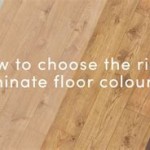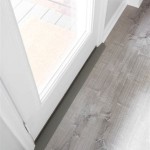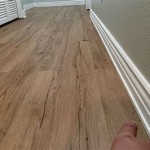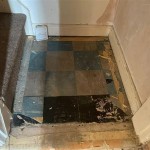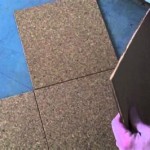Floating Vinyl Sheet Flooring Reviews: A Comprehensive Guide
Floating vinyl sheet flooring represents a popular choice for homeowners and businesses seeking a durable, aesthetically versatile, and relatively easy-to-install flooring option. It differs from traditional sheet vinyl in its installation method, which eliminates the need for adhesives by employing interlocking or click-lock systems. This article delves into a comprehensive review of floating vinyl sheet flooring, examining its key features, advantages, disadvantages, installation considerations, and factors to consider when selecting the right product for a given space.
Unlike traditional sheet vinyl, which is glued directly to a prepared subfloor, floating vinyl sheet flooring rests on top of the subfloor. This "floating" characteristic simplifies installation, reduces mess, and can potentially minimize the impact of minor subfloor imperfections. These floors are often constructed with multiple layers: a wear layer providing durability and stain resistance, a decorative layer offering a variety of designs and patterns, a core layer providing stability and structure, and sometimes an attached underlayment for added comfort and sound absorption.
Understanding the Composition and Construction of Floating Vinyl Sheet Flooring
The performance and longevity of floating vinyl sheet flooring are intrinsically linked to its composition and construction. Understanding the layers involved allows for informed decision-making when selecting the appropriate product.
The
wear layer
is the outermost layer and serves as the primary defense against scratches, scuffs, stains, and general wear and tear. The thickness of this layer is measured in mils (one-thousandth of an inch). A thicker wear layer translates to greater durability, making it suitable for high-traffic areas. Residential applications typically require a wear layer of at least 6 mils, while commercial spaces often necessitate 12 mils or more. Polyurethane coatings are frequently applied to the wear layer to enhance its stain resistance and ease of cleaning. The specific type of polyurethane finish, such as UV-cured or ceramic-bead infused, can further influence its scratch resistance and overall performance.The
decorative layer
is the layer that imparts the visual appeal of the flooring. It's typically a high-resolution printed image that replicates the look of wood, stone, tile, or other materials. The quality of the printing and the realism of the texture embossed onto the surface contribute significantly to the overall aesthetic. Some manufacturers utilize advanced printing technologies to create highly detailed and realistic visuals, including variations in color and grain pattern.The
core layer
provides dimensional stability, preventing the flooring from expanding, contracting, or warping due to temperature and humidity fluctuations. Common core materials include rigid vinyl, engineered polymer core (EPC), and wood-plastic composite (WPC). Rigid vinyl cores offer excellent durability and water resistance, while EPC cores are known for their superior indentation resistance. WPC cores, composed of wood flour and plastic, provide a softer underfoot feel and improved sound absorption. The thickness and density of the core layer are critical factors in determining the floor's overall stability and resistance to impact damage.The
underlayment layer
, if present, is attached to the underside of the core layer. It provides cushioning, sound insulation, and moisture resistance. Integrated underlayments simplify the installation process and can eliminate the need for a separate underlayment, saving time and money. The type of underlayment material, such as foam or cork, can influence its sound absorption and comfort properties.Advantages of Floating Vinyl Sheet Flooring
Floating vinyl sheet flooring offers several compelling advantages that contribute to its popularity.
Ease of Installation:
The click-lock or interlocking installation method is significantly simpler than traditional glue-down methods. This allows for DIY installation, potentially saving on professional installation costs. The large sheet format also means fewer seams compared to individual planks or tiles, contributing to a faster installation process. The floating nature of the installation also allows for installation over existing hard surface floors in many cases, provided the existing floor is relatively level and stable.Water Resistance:
Vinyl, by its nature, is highly water-resistant, making it suitable for moisture-prone areas like kitchens, bathrooms, and basements. The seamless sheet format further minimizes the risk of water penetrating beneath the flooring. However, it's important to note that while the vinyl itself is waterproof, the seams, if not properly sealed, can still allow moisture to seep through. Proper sealing of seams, especially in areas with high moisture exposure, is crucial to prevent water damage.Durability and Low Maintenance:
The wear layer of floating vinyl sheet flooring provides excellent resistance to scratches, stains, and scuffs. This makes it well-suited for high-traffic areas and households with pets and children. Cleaning typically involves simple sweeping and mopping with a mild detergent. The flooring is also resistant to fading from sunlight, ensuring that the color and pattern remain vibrant for years to come. The durability and low maintenance requirements make it a cost-effective flooring solution in the long run.Aesthetic Versatility:
Floating vinyl sheet flooring is available in a wide range of colors, patterns, and textures, mimicking the look of natural materials like wood, stone, and tile. This allows for creating a variety of design styles to suit different tastes and preferences. Advanced printing technologies enable manufacturers to create highly realistic visuals, including variations in color, grain pattern, and texture. The availability of diverse designs makes it possible to achieve a desired aesthetic without the higher cost and maintenance associated with natural materials.Comfort and Sound Absorption:
Compared to hard flooring options like ceramic tile or concrete, floating vinyl sheet flooring offers a softer and more comfortable underfoot feel. The presence of an integrated underlayment further enhances comfort and provides sound insulation, reducing noise transmission between floors. This makes it a suitable choice for apartments, condominiums, and homes where noise reduction is a priority. The softer surface can also be more forgiving on joints and muscles, making it a comfortable option for individuals who spend long periods standing.Disadvantages and Considerations
While floating vinyl sheet flooring presents numerous advantages, there are also some potential drawbacks and considerations to keep in mind.
Susceptibility to Indentation:
While the core layer provides support and stability, floating vinyl sheet flooring can be susceptible to indentation from heavy furniture or sharp objects. Placing protective pads under furniture legs can help to minimize indentation. Areas with particularly heavy foot traffic or where heavy objects are frequently moved may require flooring with a thicker core layer and a higher density. Point loads, such as those from stileto heels, can also cause indentation, especially on floors with thinner wear layers.Subfloor Requirements:
Although floating vinyl sheet flooring can be installed over existing hard surface floors, the subfloor must be relatively level, smooth, and free of moisture. Significant irregularities or unevenness in the subfloor can affect the performance and longevity of the flooring. Proper subfloor preparation, including leveling and patching, is crucial to ensure a successful installation. Moisture issues in the subfloor must be addressed before installation to prevent mold growth and damage to the flooring.Difficulty Repairing:
While individual sections of floating vinyl sheet flooring can often be replaced if damaged, repairing larger areas or sections that are difficult to access can be challenging. Matching the color and pattern of replacement sections may also be difficult, especially if the flooring has been exposed to sunlight for an extended period. In some cases, replacing the entire floor may be necessary if significant damage occurs.Environmental Concerns:
Traditional vinyl flooring is made from polyvinyl chloride (PVC), a plastic that raises some environmental concerns. However, some manufacturers are now offering phthalate-free vinyl flooring options, which are considered to be more environmentally friendly. It's important to research the manufacturer's environmental practices and look for certifications such as FloorScore to ensure that the flooring meets low-VOC emissions standards. Proper disposal of vinyl flooring at the end of its lifespan is also important to minimize its environmental impact.Seam Visibility:
Despite advancements in manufacturing, seams in floating vinyl sheet flooring can sometimes be visible, especially in large rooms or areas with significant natural light. Proper installation techniques, including careful alignment and sealing of seams, can help to minimize visibility. Choosing patterns with natural variations or textures can also help to camouflage seams. The visibility of seams can also depend on the quality of the flooring and the skill of the installer.Ultimately, the choice of floating vinyl sheet flooring depends on a careful evaluation of the specific needs and requirements of the space, balancing the advantages and disadvantages against the budget and aesthetic preferences. Selecting a reputable manufacturer and carefully following installation guidelines are crucial to ensuring a successful and long-lasting flooring installation.

What I Ve Learned As An Inspector For Luxury Vinyl Flooring Wood Floor Business

Stainmaster Luxury Vinyl Reviews Is It Worth Floorings

Glue Down Vs Floating Lvp Which Is Better Whole Cabinet Supply

Vinyl Flooring Pros And Cons Forbes Home

Stainmaster Luxury Vinyl Reviews Is It Worth Floorings

Everything You Need To Know About Vinyl Floors Forbes Home

What I Ve Learned As An Inspector For Luxury Vinyl Flooring Wood Floor Business

What Is Loose Lay Vinyl Flooring A Plank Guide Reallyfloors America S Est Hardwood

Nucore Flooring Review How It S Holding Up One Year Later

Vinyl Plank Flooring Review After One Year In Our Home
Related Posts

